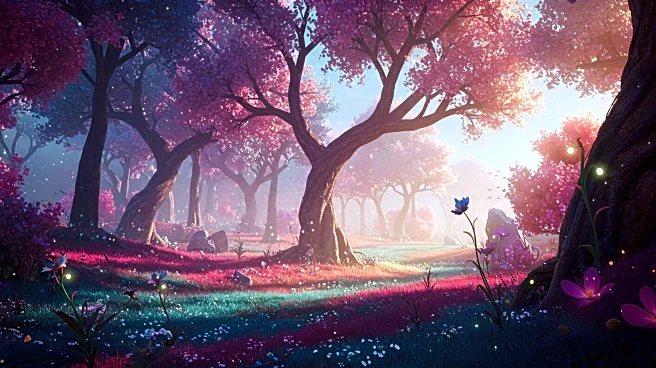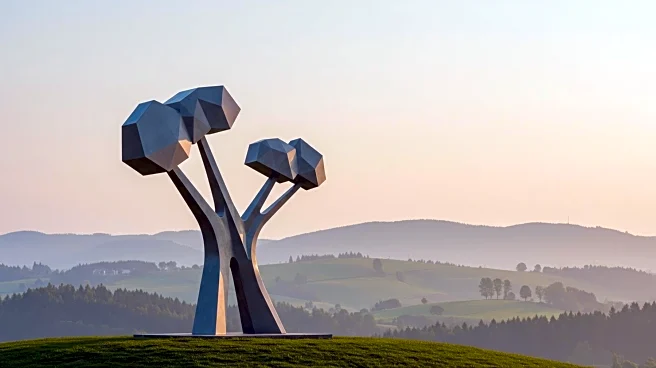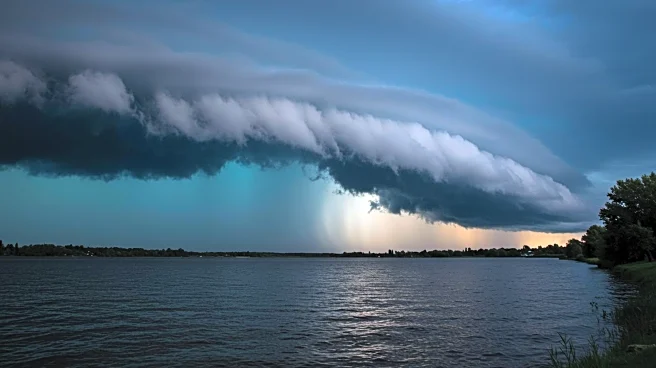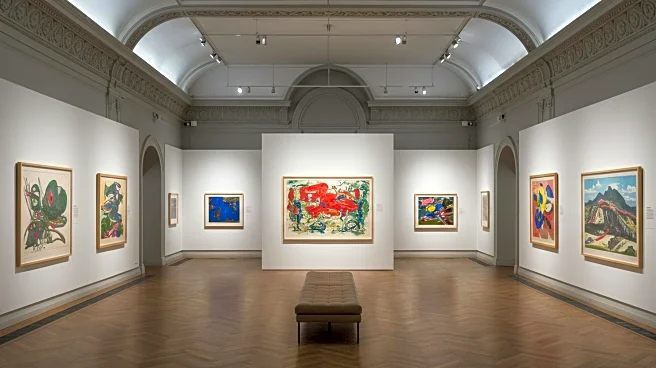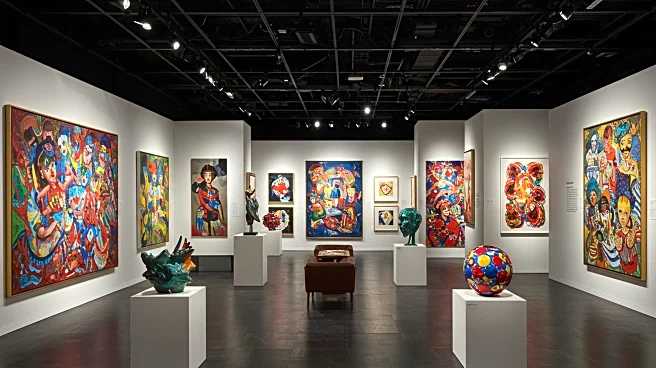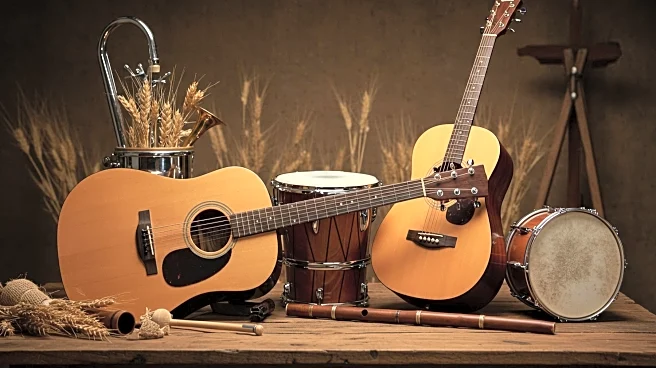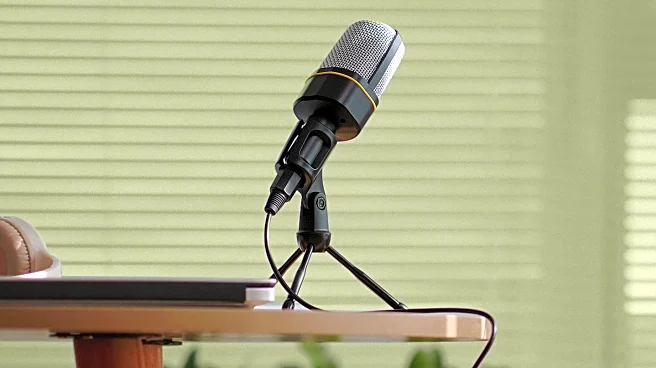What's Happening?
A new art trend known as 'para-pastoral' is gaining traction among contemporary artists, who are reinterpreting traditional pastoral themes to address current ecological, political, and social issues. Historically, pastoral art has depicted idyllic rural landscapes as serene escapes from urban and political turmoil. However, this new approach, identified by art critic Katie White, challenges the notion of the countryside as a peaceful refuge. Instead, it presents rural landscapes as dynamic spaces fraught with ecological urgency and political tension. This genre interrogates the accessibility of land, the histories it conceals, and its role in the broader narratives of climate change and capitalism. The para-pastoral movement is characterized by its layered and sometimes unsettling depictions, which aim to reflect the complexities of the modern world rather than idealize rural life.
Why It's Important?
The emergence of the para-pastoral genre in contemporary art highlights a significant cultural shift towards addressing pressing global issues through creative expression. By reframing pastoral landscapes as sites of conflict and change, artists are drawing attention to the interconnectedness of environmental, political, and social challenges. This approach not only broadens the scope of artistic discourse but also encourages audiences to engage with these critical issues. The para-pastoral movement underscores the role of art as a mirror to society, reflecting its complexities and urging a reevaluation of traditional narratives. As such, it has the potential to influence public perception and inspire action towards addressing the crises it portrays.
What's Next?
As the para-pastoral trend continues to evolve, it is likely to inspire further exploration and innovation within the art world. Artists may increasingly collaborate with environmentalists, historians, and social scientists to deepen their engagement with the themes of ecological and social justice. Additionally, art institutions and galleries may begin to feature more exhibitions that focus on these contemporary interpretations of pastoral themes, potentially reaching wider audiences. This could lead to a broader cultural conversation about the role of art in addressing global challenges and the ways in which it can contribute to societal change.
Beyond the Headlines
The para-pastoral movement also raises important ethical questions about representation and the responsibilities of artists in depicting rural and marginalized communities. By challenging traditional pastoral narratives, artists are prompted to consider the implications of their work on the communities they portray. This genre encourages a more nuanced understanding of rural spaces, acknowledging their complexities and the diverse experiences of those who inhabit them. As such, it may contribute to a more inclusive and equitable cultural landscape.
